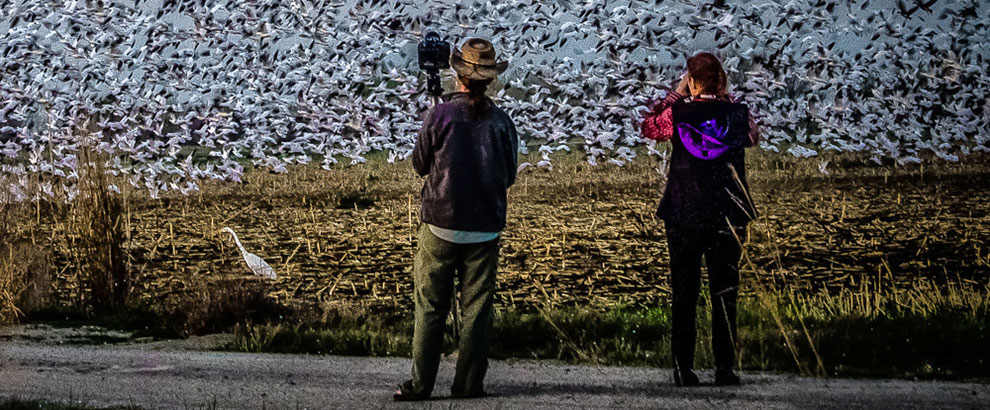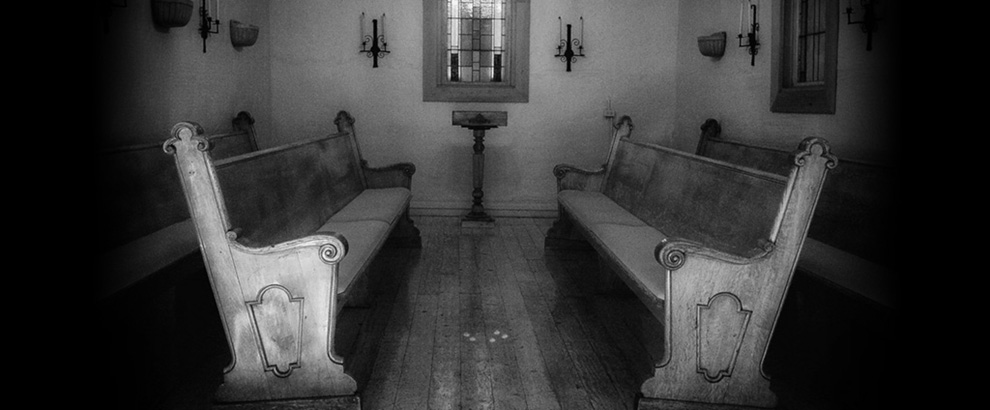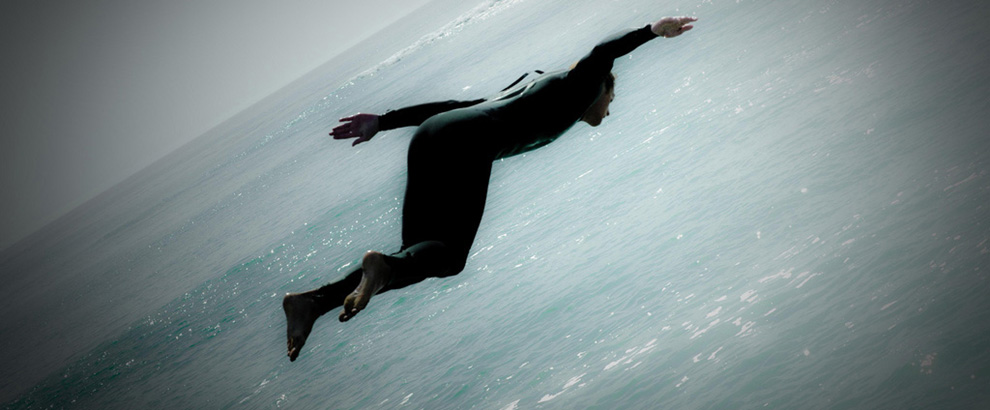
Few filmmakers convey the desolation of the physical landscape and its various reflections in the human heart as well as the Coen brothers. Their current film, Inside Llewyn Davis, takes this desolation to new (and cold!) heights in its portrayal of a marginalized, barely surviving folk singer wandering the unforgiving winter streets of Greenwich Village and Chicago in the early ’60s.
Davis is homeless, which requires him to spend inordinate amounts of energy searching for a couch where he and his guitar can flop for a not-overly-imposing night or two while he awaits some kind of break or affirmation that his hope of making it in the music world isn’t completely misguided.
Among his many problems, though, is that even hope itself seems to have been beaten down in him by the time the film picks him up as a sad-eyed, occasionally mendacious soloist, pushing into his 30s with nary an asset nor credential to his name. His resume includes kicking around coffeehouses with one poorly selling solo album, and an equally obscure previous stint with a partner who threw himself off the George Washington Bridge as his own expression of the Coen brothers’ famous ennui.
What we don’t know is whether Davis ever possessed the kind of fierce idealism and native joy in his work that all artists require to see them through the troughs that threaten to swallow whole every last one of their aspirations.
Clearly, if that spark ever existed, it is all but gone, so what we see on screen is a curious mix of stubbornness bathed in resignation.
Whether Davis ever catches a break, or summons the vigor to continue his musical odyssey regardless of continual rejection, or adapts his ambitions in order to create a satisfying, financially sustaining life in some offshoot career, remains unanswered at film’s end. But the signs are not good.
***
***
Which brings us to a People magazine story I have kept in a conspicuous place since coming across it last summer in an airport. The cover shows three attractive 30s-ish women, two on crutches with jeans that reveal missing left legs. They flank a third woman in the middle, taller, with her arms around the other two, wearing a knee brace on her left leg from which there protrudes an artificial prosthesis.
All three are also wearing bright smiles, fresh-faced in a quintessentially American Girl portrait of vigor and goodness. The headline reads:
BOMBING SURVIVOR STORIES
BOSTON STRONG
7 WEEKS LATER
INSPIRING TALES OF
HOPE & HEALING
And what I am thinking now is: How is it that Llewyn Davis and these women even inhabit the same planet?
Yes, Llewyn is a movie character, but we all know real people who embody his traits of never quite getting on top of his own life, drifting haplessly in a sea of vague discontent and executive function deficit.
What People magazine and the Coen brothers present us with is competing narratives for the true plight and tasks of the human soul.
Are we ultimately masters of our fate by virtue of our graceful comportment and response to whatever slings and arrows life sends our way? Or is the best we can do to hunker when we have to, lash out when cornered, or at the very least, stop caring enough one way or another to even bother lifting our eyes while bemoaning where the fates have led us?
Strong & Inspiring? Hope & Healing?
You likely won’t find those words when scouring Coen brothers scripts. The territory they explore is a bemused, distanced observation of the often senseless happenstance that sends human lives spinning in odd directions, from which protagonists respond by either lashing out in violence or retreating slump-shouldered into the shadows of cities and sprawling country landscapes. This is the brothers’ own art, which they explore as do few others.
***
Meanwhile, Llewyn Davis offends his kindly hosts at a dinner party he barges in on, and shouts down another act at the folkie nightclub where he occasionally plays for a pittance and tips, his disdain for all that they are—and all he fears he has become—now palpable, unvarnished, and cruel.
At some point, all of us lose a leg or its equivalent. Someone dear to us dies, we get an intractable illness, a love stomps on our tender heart, our career dream is dashed with a spate of bad timing or an evil boss or perhaps most painful of all: plainly insufficient talent that we can no longer deny. (“I wanted to be a doctor, but I just couldn’t hack the chemistry” is a benign version of this oft-told tale.)
What then?
The People story subjects know what: “I choose to focus on the positive,” says one. “I’m happy to be alive.”
Another: “There’s no point in negativity. You just have to look forward and do the best you can.”
And another, a professional ballroom dancer: “I will dance again…On a normal day we practice for about two and a half hours every morning. I miss that so much.”
Meanwhile, Llewyn Davis offends his kindly hosts at a dinner party he barges in on, and shouts down another act at the folkie nightclub where he occasionally plays for a pittance and tips, his disdain for all that they are—and all he fears he has become—now palpable, unvarnished, and cruel.
***
In the Coen brothers’ world, lost souls bump up against other lost souls, each of them autistic to varying degrees. They may all speak English, but that does not ensure a common language. In some cases, as with a taciturn James Dean-like driver who transports Davis and a drug addicted jazzman (played memorably by John Goodman) through a deathly dark and snow-bound midwestern night, their language rises barely above the guttural.
No language, no relationship. It is more than the temperature that is cold in the Coens’ wintry world.
Staring long at the People cover, I found myself wondering about the dark days and thoughts its subjects had to have experienced. Moved by some inner resistance and refusal to be bowed, and with not inconsiderable help from makeup and hair stylists and lighting technicians (and likely some photoshopping from graphic artists), they look quite fetching as they stare back at us, barely 40 days removed from being flung onto the concrete, lying with ghastly wounds as blood pooled around them and sirens blared and they no doubt pined for their loved ones.
The sheer pain, the shock, the bandages, the ointments, the sutures, the scabs, the hellish sweaty rehab and gritting of teeth, every single part of their existence now at least physically different and requiring major adjustment in their everyday lives. It could not have been easy, nor given to breezy sloganeering or denial.
And yet:
“I choose to focus on the positive.”
“There’s no point in negativity.”
“I will dance again.”
Up from those hospital beds, putting one foot in front of the other, that cliche pure metaphor now as they go about their one-footed lives. In their world, this is simply what one does.
I don’t see any of them cottoning much to Llewyn Davis, nor vice versa. Do you?
***
***
A New Year’s shout-out and thanks to all, including the photographers:
Elizabeth Haslam, whose photos (except for the books) grace the rotating banner at the top of this page. Some rights reserved under Creative Commons licensing, see more at: https://www.flickr.com/photos/lizhaslam/
Books photo by Larry Rose, Redlands, California, all rights reserved, contact: larry@rosefoto.com
Horizon and storm clouds photos courtesy of Lotus Carroll, Austin, Texas, some rights reserved under Creative Commons licensing, see more at: http://www.flickr.com/photos/thelotuscarroll/
Winter snow scene courtesy of Margaret Wyker, Decatur, Alabama, some rights reserved under Creative Commons licensing, see more at: http://www.flickr.com/photos/captured-spirit_/


















Thanks, Andrew for this thoughtful New Year’s Day essay. It came at a good time for me. I have a bad cold, and I am in grief for my sweet cat that had to be euthanized two days ago.
I will be reading and rereading this essay for encouragement. Genie
Sadly, I’m definitely more Llewin Davis than Boston strong. But I do love People magazine!
As I approach the 5th anniversary of a life-threatening, life-altering stroke I am thankful for the remarkable support from loved ones that made it possible (imperative, really) for me to be Boston strong. Perhaps Davis and those of his ilk are not blessed with this kind of essential relational support. This, of course, raises a kind of chicken-egg question in terms of how strong relational support is generated and sustained. Davis’ difficulties appear (I’ve not yet seen the film) to be exacerbated by an absence of meaningful support. But why the absence? Thanks for stirring these thoughts my friend.
I suspect that’s there a little bit of the Manic-Depressive in all of us. Otherwise we wouldn’t find both of these stories fascinating. I suspect my cynicism and sarcasm often lead people to believe that I’m more like Llewyn Davis than the Boston survivors, but they’d be wrong.
Great essay Andrew. I think often of Victor Frankl’s book, Man’s Search for Meaning. There he tackles this basic human truth – we can’t control all that life sends our way, but we can choose how to respond to it. I was lucky enough to read this as a teenager and it’s stayed with me all these 40+ years. No doubt that bad things happen to good people. In my own life this year I’ve been dealing with the bad deal we’ve been dealt here at Yulupa with construction defects over which we had no control. Is there a bright side? Well, the fabulous work of the reconstruction company – true artists and craftsmen – have renewed my faith in folks who work in the construction industry. When all is said and done, our lovely community will be built with the quality originally intended.
I feel like another post is in order just to explore the issues raised by these responses. Grief over lost pets—what an amazing, and telling, phenomenon that is in human life, eh? (Grist for a future post—thanks Genie!)
Blake, I suspect the Coen brothers get a kick out of People mag in much the same way you do! A most fascinating window into American life, I’d say…
Jay, it does get down to relationship, doesn’t it? Without it, we are so, so sunk. Through that lens, Davis is a lost soul indeed—let’s talk after you see the movie!
Loren, you’re right about your first thought, I think, and your second thought—cynicism and sarcasm as cover for tenderness and hope—is worthy of deep exploration. How about a blog post of your own on that?
Linda, there is most always hope and some glint of silver, even in the most dire circumstance, isn’t there? Your mention of Frankl reminds me of a statement I just came across recently, don’t recall the source, of a concentration camp survivor being sustained by the countless acts of small kindnesses that the prisoners offered to one another. From that arid awful soil, small flowers finding a way to bloom…
What a great set of responses – grist for the mill indeed — Frankl’s insights first grabbed me in college 40 some years ago and continue to help — although I’ve not been tested (ala the Job post) nearly as severely as many – losing my brother to random violence 35 yrs ago brought me to the void – all the “why” questions that defy answers… I think there is something to the psychological notions of cognitive style (i.e. how we are cast into the world) – or perceptual mind sets — some of us just have more of a Llewyn Davis mindset — others Boston Strong — how much we can intentionally change is the subject of intense debate/exploration in Cognitive Psych – I recall attending a seminar w/noted cranky cognitive theorist Albert Ellis, who would intentionally use raunchy/provocative language to manipulate the emotional responses of his audience to demo how we are all such “reactive” creatures promising through “rational” self-talk that we could become more sane… really? Not at all sure, but there is some serious “nature” here in the age-old nature vs nurture debate… really appreciate the great responses to this post (and the movie was a gem of sorts too!)… thanks!